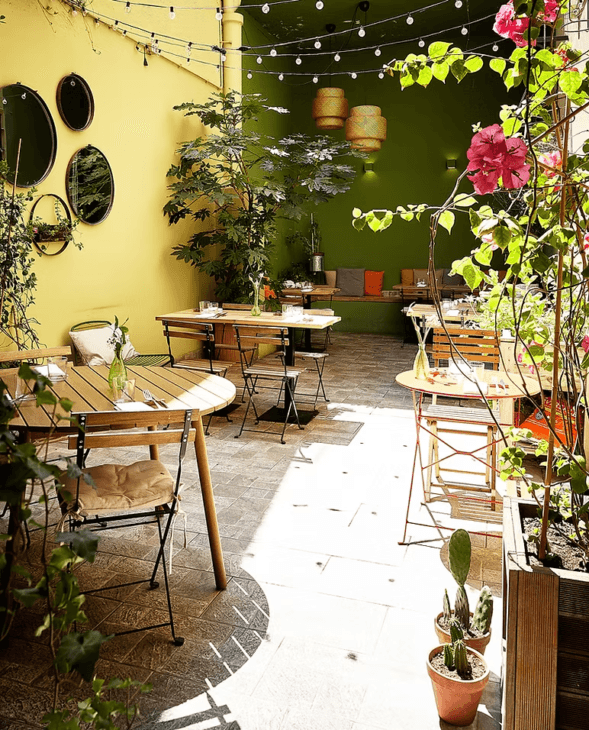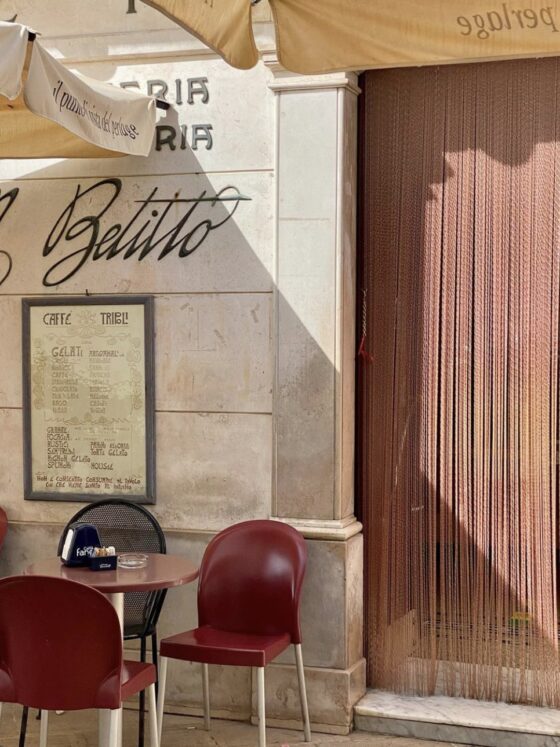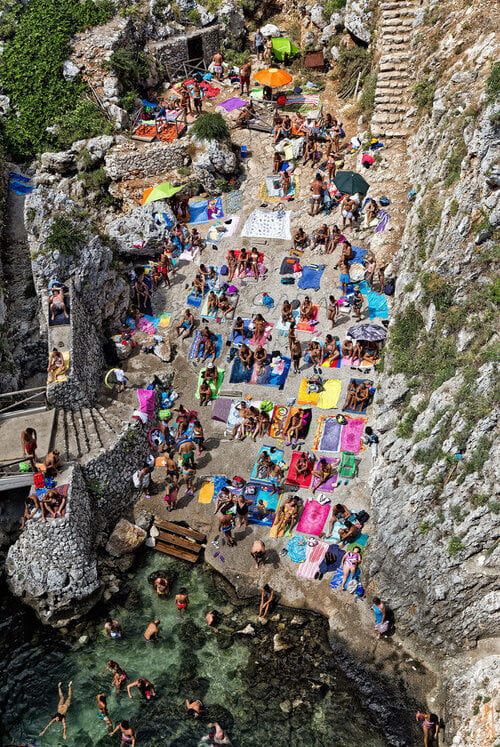To be Vegan in Italy
During those days, I asked myself many questions, such as: What is life like for vegans in an omnivorous world? What are the challenges?.
I eat everything, but in recent years, I’ve been trying more and more to avoid eating meat—partly because of its environmental impact, partly for my health, and, not least, to avoid having animal cruelty on my conscience as much as possible.
Vegan in Italy
This year, for the first time, I did Veganuary, and so I became a vegan in Italy. Out of curiosity, as a challenge, and to see what it’s like to live as a vegan in Italy.
I started my Veganuary on January 7th, the day after Epiphany. I waited until all the Christmas holidays were over, which in Italy officially end on January 6th—the day when the Befana arrives and brings sweets to children. Holidays in Italy are often spent with family, at relatives’ homes, and, as you might imagine, they revolve around food—lots of food. To avoid offending the cooks (my mother and mother-in-law), I waited until January 7th before locking away all animal-based products.
During those days, I asked myself many questions, such as: What is life like for vegans in an omnivorous world? What are the challenges? For example, what do you do when having lunch with your boss at a seafood restaurant he chose? Can you just ask for a simple plate of pasta with tomato sauce? Or is the real difficulty breaking long-standing household habits? Or perhaps it’s giving up staple items that are always in our fridge—like Parmesan cheese and butter?

And I also wondered: How do vegan and vegetarian tourists manage when they visit Italy?
So, I decided to write a few lines to reassure them while also updating them on the current situation in Italy—one that is rapidly changing towards a more vegan-friendly food culture.
A Bit of History
Italian cuisine—or what we simplify as “traditional Italian cuisine”—is actually rich in vegetarian and vegan dishes. My grandparents, who were farmers and artisans as children, ate very little meat. Animals were mainly used for work (plowing, transportation) or for their by-products: chickens for eggs, cows, sheep, and goats for milk, and in the case of sheep, for wool.
The diet was based on large amounts of vegetables, legumes, and cereals (mainly wheat and corn). People mostly consumed as bread. Despite our pride in pasta’s ancient history, my grandparents didn’t eat it often as children. Pasta became more common during Mussolini’s regime, when he promoted the “Battle for Grain” campaigns.
My grandmother, who grew up in the 1930s in the Ciociaria countryside (south of Rome), mainly ate “minestra di pane”—a soup of seasonal vegetables and beans poured over slices of bread. Delicious. When available (not always), the family added a small piece of pork rind for flavor.
Ah, the pig! The most important animal in traditional cuisine because it was raised solely for consumption. Pigs were fed acorns all year (ironically, they were vegan!), and then slaughtered in January, the coldest month. I remember this from my own childhood—it was a big social event. The entire neighborhood would gather to help with the slaughter, the feast, and the butchering. Every part of the pig was used—hence the saying, “Nothing goes to waste from a pig.” In my grandmother’s time, a single pig’s meat (sausages, ham, bacon, steaks, and more) could last a large family an entire year.
Then, during the economic boom of the 1960s, “meat is good for you” became the popular thought. Former farmers, who had become merchants, wealthier farmers, or small business owners, embraced the idea. For my grandmother, now an adult, meat was essential—Italians had to eat it at least once a day. Even doctors recommended it back then.
Today, however, we see a reversal of this trend in Italy. Red meat, in particular, is now advised to be eaten in moderation. Thanks to a growing interest in healthy eating, Italian cuisine is evolving—often returning to its humble, plant-based roots.
Breaking It Down: Meal by Meal
BREAKFAST
Eating at home is easy because you can prepare whatever you like. Bread and jam—vegan staples—are found in every household.
Surviving in Italian cafés is also becoming easier. More and more often, you can find vegan croissants—but be warned, they sell out fast! Even my father-in-law, who despises veganism, admits: “I actually like the vegan croissant, and I order it at the bar.” He says it the same way someone might say, “I even have gay friends!” So, get to the café early—vegan croissants disappear quickly.
They might be frozen or fresh, depending on the café’s quality.
What to drink? Obviously, not a regular cappuccino. But nowadays, nearly every café has soy milk, so you can confidently order a “soy cappuccino” or “soy macchiato.” No one will raise an eyebrow anymore, unlike a few years ago. Times are changing.
Vegan breakfast recommendation in Rome:
Julietta Pastry and Lab (Via Francesco Negri 25/27)
Try the pain suisse—delicious!
LUNCH
During Veganuary, I found it challenging to eat out. At home, it was easy—every supermarket now has vegan products (cheese, burgers, cold cuts). But dining out was often tough.
The universal vegan fallback? Pasta with tomato sauce. Be careful, though—avoid egg-based pasta (like tagliatelle, tagliolini, or tonnarelli), which is fine for vegetarians but not for vegans.
Other great vegan options often found on Italian menus:
- Pasta e fagioli (pasta and beans) or pasta e ceci (pasta and chickpeas). Just check if the pasta is egg-free.
- Pesto? It looks vegan, but it’s not—it contains Parmesan and often pecorino.
- Always specify “no cheese” when ordering pasta, as many restaurants sprinkle in Parmesan or pecorino by default.
Some regional vegan-friendly dishes:
- Sicily: Caponata, vegetable couscous, macco di fave, pane e panelle.
- Tuscany: Pappa al pomodoro, ribollita.
- Liguria: Farinata di ceci, focaccia.
- Northern Italy: Polenta (ask for vegetable-based toppings).
- Lazio: Panzanella, bruschetta, artichokes, chicory, spaghetti aglio e olio.
Vegan-friendly lunch spot in Rome: Aromaticus (Locations: Trastevere & Monti). Be sure to book ahead!
DINNER
Dinner during Veganuary was sometimes frustrating, especially when eating out. Ethnic restaurants were usually fine—Indian food was great, Chinese was hit-or-miss, and even burger joints offer at least one vegan burger in Italy.
Pizzerias, however, are still reluctant to give up mozzarella, which is central to pizza. But no worries! Order a Marinara or ask for a pizza without cheese. Try a Capricciosa (without ham and egg) or customize your own with zucchini flowers, mushrooms, or other veggies.
Warning: Supplì (Roman fried rice balls) often contain meat or mozzarella, so always ask. Most Neapolitan and Roman fried foods also contain dairy, béchamel, or anchovies. But you can always go for a fried artichoke in Rome or a Montanara (fried mini pizza) in Naples—just ask for no cheese.
Vegan-friendly dinner spots in Rome:
- Burgers: California Cook House (various locations).
- Pizza: Il Rifugio Romano (Via Volturno 39/41).
- Vegan gelato: Raw Chocolate (Monti district).
Final Thoughts
After a month of veganism, I’ve learned new recipes, gained new insights, and reflected on how Italian cuisine is evolving.
Is it possible? Yes. At home, with careful grocery shopping, it’s easy. Eating out requires flexibility—but maybe that’s a good thing. You can’t always have everything you want, and sometimes, it’s okay to settle.
The hardest part? Eating at my mother-in-law’s. Everything had eggs, meat, or lard. But hey, at least there were plenty of veggies.
The good news? Many of my peers are embracing plant-based traditions, reserving meat for special occasions or finding alternatives. Just last Sunday, I made a seitan ragù for my in-laws.
Don’t tell them. 😏








